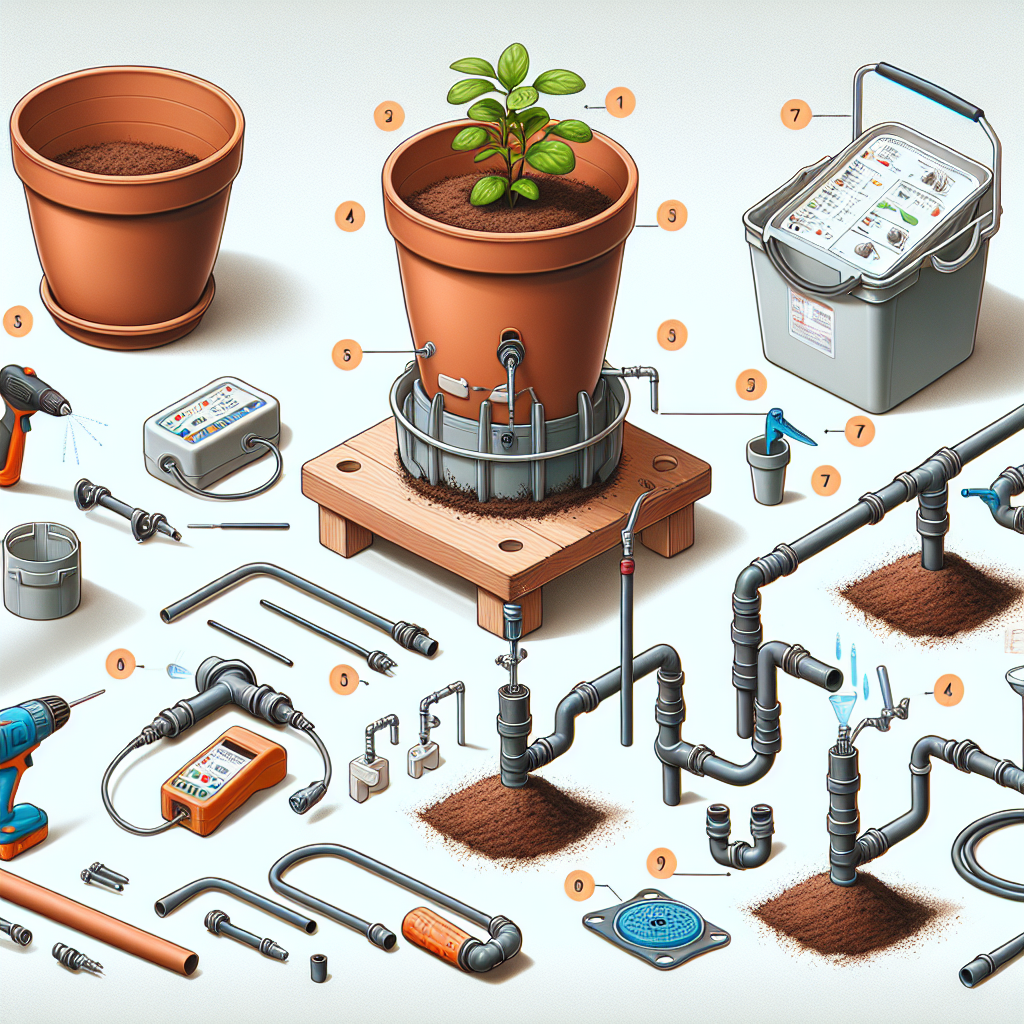Setting up a slow drip irrigation system for potted plants can be a game-changer for any gardener looking to maintain healthy and vibrant greenery. This method of watering allows for consistent moisture levels, reduces waste, and promotes deeper root growth. In this comprehensive guide, you will learn tailored tips and techniques to set up a slow drip irrigation system for your potted plants.
Firstly, it’s essential to understand the benefits of using a slow drip irrigation system for your potted plants. Unlike traditional watering methods that can lead to overwatering or underwatering, a slow drip system delivers water directly to the plant’s roots at a controlled rate. This helps prevent water runoff, evaporation, and ensures that every drop is used efficiently. By setting up a slow drip system, you can save time and energy while promoting healthier growth in your potted plants.
**Choosing the Right System**
When setting up a slow drip irrigation system for your potted plants, it’s crucial to choose the right system based on your plant’s needs and the size of your pots. There are various options available in the market, including soaker hoses, drip emitters, and adjustable drippers. Soaker hoses are ideal for larger pots or containers, as they deliver water along the length of the hose. Drip emitters work well for individual pots or plants that require precise watering. Adjustable drippers allow you to control the flow rate of water based on each plant’s requirements.
**Positioning Your System**
Once you’ve selected the right system for your potted plants, it’s time to position it correctly. Place the soaker hose or drip emitters around the base of each plant, ensuring that they are close enough to deliver water directly to the roots. Avoid placing them too close to the stem or foliage, as this can lead to mold or rot issues. For hanging baskets or elevated pots, consider using adjustable drippers that can be positioned at different heights.
**Setting Up Your Timer**
To further automate your slow drip irrigation system, consider investing in a timer that controls when and how long your plants are watered. Timers can be set based on specific schedules or moisture levels using sensors. Program your timer to water early in the morning or late in the evening when evaporation rates are lower. This will help maximize water absorption and minimize wastage.
**Maintaining Your System**
Regular maintenance is essential to ensure that your slow drip irrigation system continues to function effectively. Check for clogs in emitters or hoses caused by debris or mineral buildup regularly. Flush out any blockages with clean water or vinegar solution if needed. Inspect for leaks or cracks in hoses and replace them promptly to prevent water loss.
**FAQs**
1) Can I use a slow drip irrigation system indoors?
Yes, you can use a slow drip irrigation system indoors for potted plants placed near windowsills or under grow lights.
2) How often should I water my plants with a slow drip system?
The frequency of watering depends on factors like plant type, pot size, and environmental conditions. Monitor soil moisture levels regularly and adjust watering schedules accordingly.
3) Do I need special tools to set up a slow drip irrigation system?
While specialized tools like hole punchers or connectors may be helpful during installation, basic gardening equipment like scissors and measuring tape should suffice.
In conclusion, setting up a slow drip irrigation system tailored for potted plants is an excellent investment in maintaining healthy greenery while conserving water resources efficiently. By following these tips and techniques outlined in this guide, you can enjoy lush and thriving potted plants with minimal effort. Experiment with different systems and configurations until you find what works best for your specific plant needs.














